Seeing stars: what you need to know to stargaze in your garden
Stargazing is a lovely bonding activity for the whole fam. Start now and you just might be a pro-backyard astronomer ahead of the meteor shower at the end of July.
Stargazing can be easily done in your back garden. Photo: Jeremy Bishop
The past several months have had us all taking a renewed interest in our precious patches of outdoor space, from camping out in our garden with the kids to planting fruits and flowers.
We've got another great reason for you to spend some more time outdoors: stargazing.
July is a great month to get started with stargazing - there's a meteor shower at the end of July (July 31st) and on July 4th, Saturn, Jupiter and the Moon will all be close together - so you may get to sneak a peek at all three.
From the gear you need to the expert tips on what to see now, here's how to stargaze this summer (it'll make the fact that the kids won't go to bed pre-11pm much more bearable, we think).
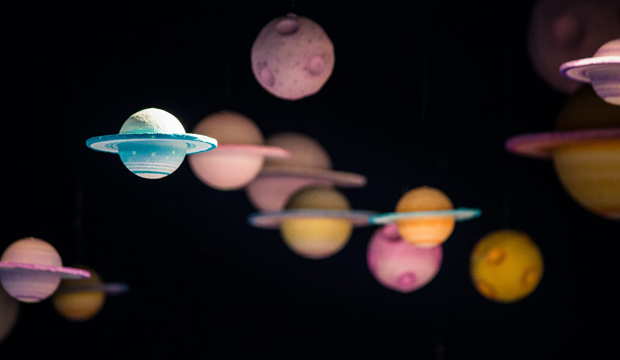
Photo: David Menidrey
Stars, constellations and planets to spot from your garden
In June 2020, Siren Craft Brew hosted an online launch event for their latest beer, Lumina, inspired by the night sky. The brand invited Oxford University astrophysicist, Dr. Becky Smethurst, to give her top tips on how to stargaze in your back garden. Here are a few to get you started:
How to get the kids keen on stargazing
From crafts to books to gear to websites, these are some useful ideas for getting kids excited about starry nights.
The apps to have
These apps will educate you about celestial beings - as well as telling you when the best time to spot one is.
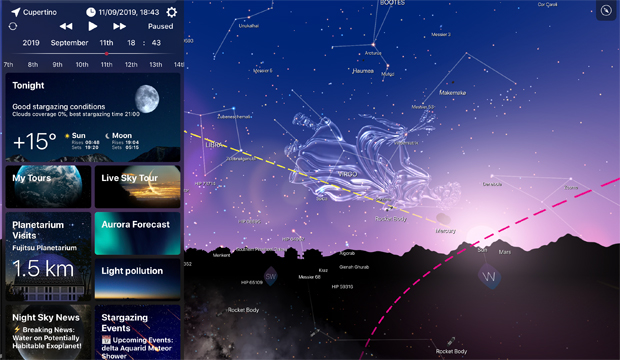
Photo: Night Sky, iCandi apps
Night Sky: Dubbed a "planetarium in your pocket," Night Sky gives you access to a 3D map of the sky with lovely illustrations of constellations, stars, planets and more. Night mode lets you view the map in the dark, and there are integrated weather reports that will tell you which times are best for stargazing.
Star Walk and Star Walk 2: The Star Walk app has been a favourite since it won the Apple Design Award back in 2010, and puts the night sky map, with thousands of constellations and stars, at your fingertips. Or go next level and download Star Walk 2, which has a "visible tonight" section so you know what wonders of the sky you might spot that evening, as well as upcoming starry events. It's almost as gorgeous to look at as the sky itself.
Other resources future stargazers may want to check out? The Natural History Museum has some helpful tips on how to stargaze in London - and best spots if you'd like to go further afield than your garden (Regent's Park is known for good stargazing). You can also get crafts inspo and activity ideas from CBeebies' Stargazing.
Kit for kids
One of the benefits of stargazing is it doesn't require much kit. A basic pair of 7 x 50 binoculars should do the trick - and will help you see Jupiter's biggest moons, although we've found a few other ideas to inspire you...
Kids will love moon and space crafts, whether it's making a planet-themed mobile, charting moon phases (with photos or paper cutouts) or making their own telescope.

Photo: Build Your Own Kits
This kit includes a build-your-own working cardboard and glass telescope with 16x magnification, making it as much fun for would-be engineers as for stargazers.
Build Your Own Telescope, £19.99 on The Happy Puzzle Company - buy here
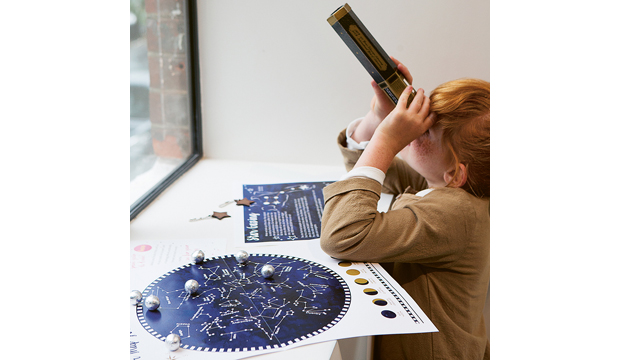
Photo: Not On The High Street
This stylish gift set for astronomers-in-training includes a make-your-own working telescope, poster with constellations you can observe from the UK, questions about stars and the planets (which transform into origami mini stars) and a fact sheet.
Luna Studio Designs Personalised Astronomical Adventure Kit, £19.50 on Not On The High Street - buy here
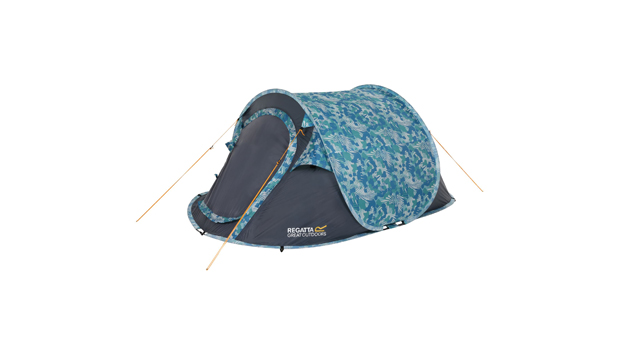
Photo: Regatta
A night under the stars is the perfect excuse for camping in the garden - and embracing some of that nature-led "unschooling" philosophy. We predict you'll be using this pop-up tent for much more than camping, from beach days to rainy-weather, living room camping.
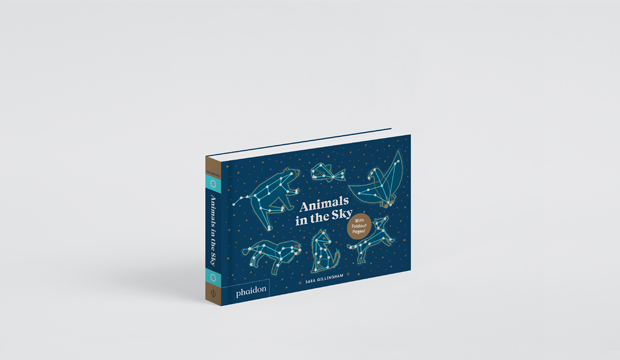
Photo: Animals in the Sky, Phaidon
Books
Reading is a lovely way to engage young minds about any subject, including astronomy. Here are a few to appeal to different ages and interests...
A lovely constellation-themed board book with fold-out pages, this book is an educational twist on those first animal books for toddlers.
Animals in the Sky by Sara Gillingham, £7.33 on Amazon - buy here
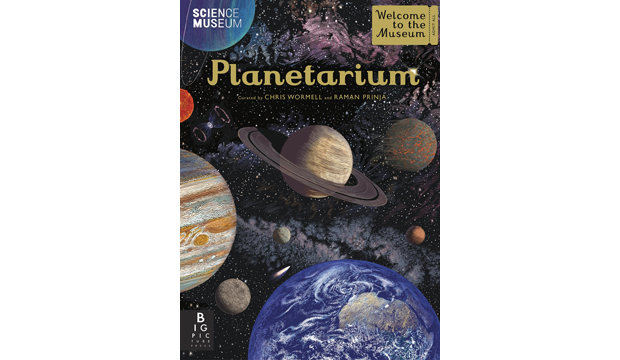
Photo: Waterstones
One to engage older readers, including parents, this stunning book tells you everything you need to know about the universe and beyond. Kids 6 and up will get a lot out of Planetarium Junior, by the same authors.
Planetarium by Raman Prinja and Chris Wormell, £25 on Waterstones - buy here
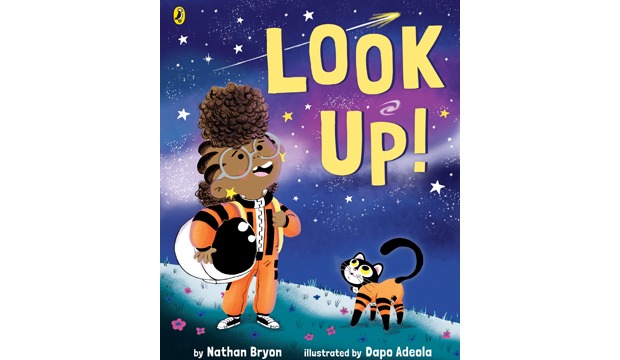
Photo: Puffin Books
A fantastic picture book about a little girl determined to get her older to brother to stop looking down at his phone and to start looking up at the stars in the sky. Brixton's inclusive bookshop, Round Table Books, tell us it's a consistent bestseller. For more of their top recommendations, check out our article on the best inclusive books for kids.
Look Up! by Nathan Bryon and Dapo Adeola, £6.99 on Round Table Books - buy here
Dr. Smethurst also recommends starlore for the kids: reading them constellation mythologies, or introducing them to the classical characters who inspired them, as well as making up your own star stories.
Culture Whisper is your curated guide to the best of London. We may earn a commission for items purchased through our retailer links.
We've got another great reason for you to spend some more time outdoors: stargazing.
July is a great month to get started with stargazing - there's a meteor shower at the end of July (July 31st) and on July 4th, Saturn, Jupiter and the Moon will all be close together - so you may get to sneak a peek at all three.
From the gear you need to the expert tips on what to see now, here's how to stargaze this summer (it'll make the fact that the kids won't go to bed pre-11pm much more bearable, we think).

Photo: David Menidrey
Stars, constellations and planets to spot from your garden
In June 2020, Siren Craft Brew hosted an online launch event for their latest beer, Lumina, inspired by the night sky. The brand invited Oxford University astrophysicist, Dr. Becky Smethurst, to give her top tips on how to stargaze in your back garden. Here are a few to get you started:
- Stand in the dark to develop a night vision - it can take around half an hour for your eyes to adjust to the dark.
- Find the best view - don't compete with street lamps or garden lamps. Some constellations, like Orion, can only be seen in winter. Others, like Cassiopeia, are visible year round. Summer constellations to look out for are Cygnus, the swan, which resembles a cross in the sky, as well as the Milky Way galaxy.
- Stargaze when there's no moon out - light pollution makes spotting stars more difficult, so it's better to see planets and stars on a dark, moonless night.
- You can see Saturn and Jupiter from your back garden in London - just look southeast. If you've spotted something super bright, you're looking at Jupiter. Saturn is a palm's distance away, and looks yellowish. Stars twinkle because they're burning fuel, so if it's not twinkling, you're likely looking at a planet.
- A planisphere is a worthy investment - it'll work for the next 1,000 years. It's easy to use, just work out where N, S, E and W are and match what you see in the sky with what you see on the planisphere.
- Keen to capture the stars in all their glory? Try the Night Mode function on your iPhone 11 - it really works.
How to get the kids keen on stargazing
From crafts to books to gear to websites, these are some useful ideas for getting kids excited about starry nights.
The apps to have
These apps will educate you about celestial beings - as well as telling you when the best time to spot one is.

Photo: Night Sky, iCandi apps
Night Sky: Dubbed a "planetarium in your pocket," Night Sky gives you access to a 3D map of the sky with lovely illustrations of constellations, stars, planets and more. Night mode lets you view the map in the dark, and there are integrated weather reports that will tell you which times are best for stargazing.
Star Walk and Star Walk 2: The Star Walk app has been a favourite since it won the Apple Design Award back in 2010, and puts the night sky map, with thousands of constellations and stars, at your fingertips. Or go next level and download Star Walk 2, which has a "visible tonight" section so you know what wonders of the sky you might spot that evening, as well as upcoming starry events. It's almost as gorgeous to look at as the sky itself.
Other resources future stargazers may want to check out? The Natural History Museum has some helpful tips on how to stargaze in London - and best spots if you'd like to go further afield than your garden (Regent's Park is known for good stargazing). You can also get crafts inspo and activity ideas from CBeebies' Stargazing.
Kit for kids
One of the benefits of stargazing is it doesn't require much kit. A basic pair of 7 x 50 binoculars should do the trick - and will help you see Jupiter's biggest moons, although we've found a few other ideas to inspire you...
Kids will love moon and space crafts, whether it's making a planet-themed mobile, charting moon phases (with photos or paper cutouts) or making their own telescope.

Photo: Build Your Own Kits
This kit includes a build-your-own working cardboard and glass telescope with 16x magnification, making it as much fun for would-be engineers as for stargazers.
Build Your Own Telescope, £19.99 on The Happy Puzzle Company - buy here

Photo: Not On The High Street
This stylish gift set for astronomers-in-training includes a make-your-own working telescope, poster with constellations you can observe from the UK, questions about stars and the planets (which transform into origami mini stars) and a fact sheet.
Luna Studio Designs Personalised Astronomical Adventure Kit, £19.50 on Not On The High Street - buy here

Photo: Regatta
A night under the stars is the perfect excuse for camping in the garden - and embracing some of that nature-led "unschooling" philosophy. We predict you'll be using this pop-up tent for much more than camping, from beach days to rainy-weather, living room camping.
Malawi 2-Man Pop Up Print Festival Tent Tropical Print, now £59.95 on Regatta - buy here

Photo: Animals in the Sky, Phaidon
Books
Reading is a lovely way to engage young minds about any subject, including astronomy. Here are a few to appeal to different ages and interests...
A lovely constellation-themed board book with fold-out pages, this book is an educational twist on those first animal books for toddlers.
Animals in the Sky by Sara Gillingham, £7.33 on Amazon - buy here

Photo: Waterstones
One to engage older readers, including parents, this stunning book tells you everything you need to know about the universe and beyond. Kids 6 and up will get a lot out of Planetarium Junior, by the same authors.
Planetarium by Raman Prinja and Chris Wormell, £25 on Waterstones - buy here

Photo: Puffin Books
A fantastic picture book about a little girl determined to get her older to brother to stop looking down at his phone and to start looking up at the stars in the sky. Brixton's inclusive bookshop, Round Table Books, tell us it's a consistent bestseller. For more of their top recommendations, check out our article on the best inclusive books for kids.
Look Up! by Nathan Bryon and Dapo Adeola, £6.99 on Round Table Books - buy here
Dr. Smethurst also recommends starlore for the kids: reading them constellation mythologies, or introducing them to the classical characters who inspired them, as well as making up your own star stories.
Culture Whisper is your curated guide to the best of London. We may earn a commission for items purchased through our retailer links.
TRY CULTURE WHISPER
Receive free tickets & insider tips to unlock the best of London — direct to your inbox